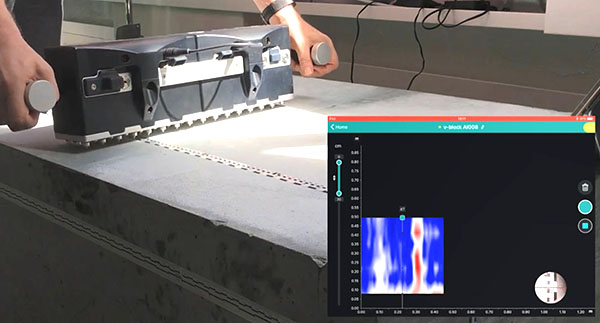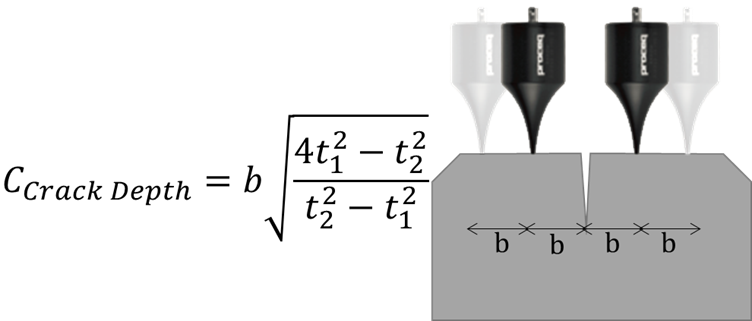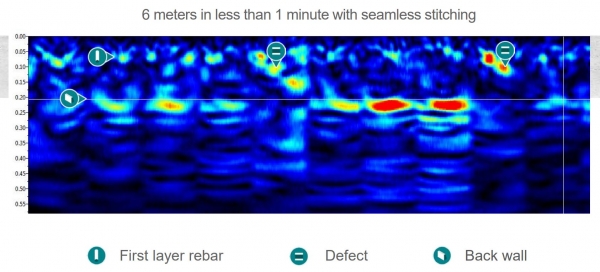Setting up a Pundit for Different Applications
Choosing and Setting up Sonic Test Equipment for Different Tasks

Ultrasonic Pulse Echo (UPE) equipment is comparable, but only requires access to one side of a structure to be used, and takes advantage of the unique properties of point contact shear wave transducers to enhance imaging and datalogging potential.
Most UPV tests are completed using Compression wave energy, the same energy as caries sound through the air, but it is also possible to complete tests with shear wave energy, which has a different slower velocity compared to compression waves. Specialised transducers are required. The vast majority of UPE equipment uses shear wave energy, in particular array systems take advantage of a "polarised" sensitivity to image slices in one measurement.
The choice of frequency of the ultrasound is also important, the Compression wave transducers used over concrete are commonly 54kHz, but a lower frequency set can be used for increased penetration distance in large test areas, or higher frequency transducers are sensitive to smaller defects, and make testing small samples more consistent.
Testing Laboratory Samples
Lab samples are often tested with UPV equipment, either for comparative velocity measurements, or as input to curves used to relate compression wave velocity to compressive strength.
Where small sample are to be tested the use of a higher frequency transducer set than the standard 54kHz makes selection of first arrival time cleaner, and is recommended provided that maximum aggregate size for the transducer frequency is not exceeded.
Ultrasonic Pulse echo equipment is not commonly used on conventional laboratory samples.
Location of Deficient Concrete or Honeycombing On-site
UPV is one of the most sensitive sonic testing tools for concrete and is very suitable to locate regions of different quality over a region of material or to locate regions of even light honeycombing, provided the sound path is directly through the region of concern.
It is critical that when testing is for voiding the signal path is direct from one side of the concrete to the other, in line with the suspect region. Indirect measurements where both transducers are placed on one surface of the concrete is not sufficient, as the depth of penetration is unknown and cannot be guaranteed to go through the region of concern.
Ultrasonic Pulse Echo equipment is excellent for the visual location of honeycombing and voids within a structure. For example the Pundit Live Array can produce B-Scan slice showing signal returns from the back wall of a concrete element, with any voiding providing either an earlier signal return, or in some cases the vanishing of the back wall signal return.
Crack Depth Measurement
Crack depth measurement requires an indirect measurement perpendicular to the cracks length. The standard 54 kHz transducers are appropriate, though the single point contact Exponential transducers are handy to speed the measurement procedure.
The diagram below shows the two positions transducers must be placed, this measurement is based upon the British standard for UPV testing, which explains the formula and principles used to calculate crack depths.

Evaluation of Elastic Modulus
To calculate an elastic modulus the density of a bulk material must be known and a measurement of the Compression wave velocity and the Shear wave velocity of the material must be recorded. To complete this measurement Proceq’s Dry Point Contact Shear wave velocity transducers are required in addition the standard 54 kHz compression wave transducers.



